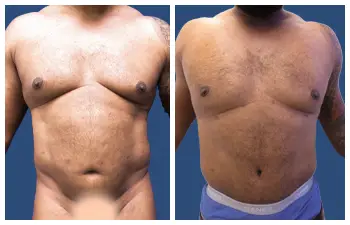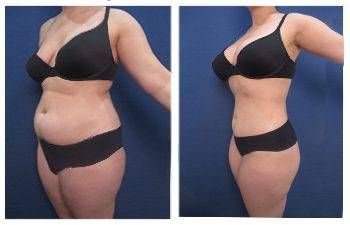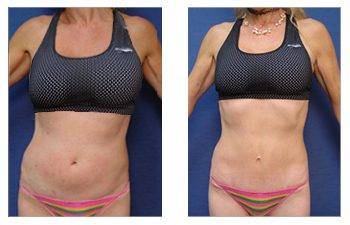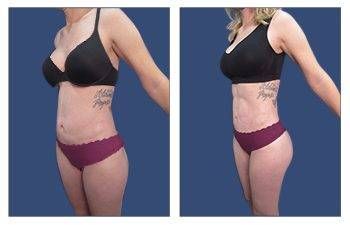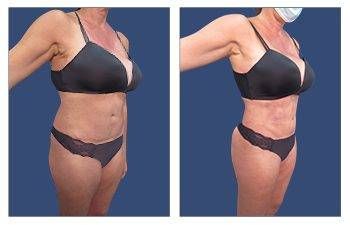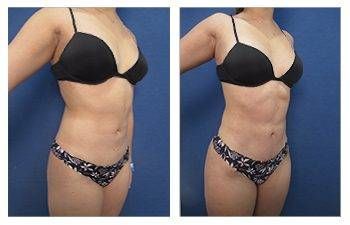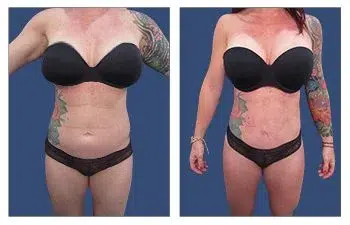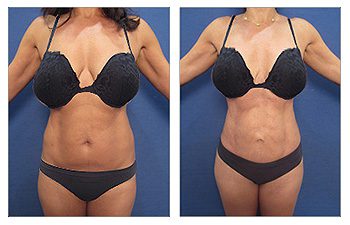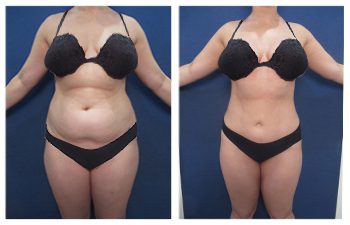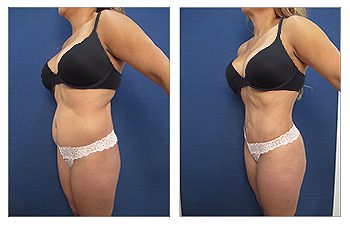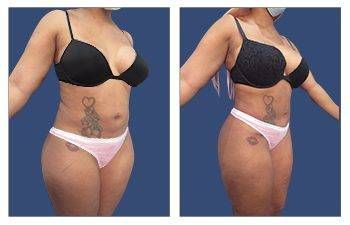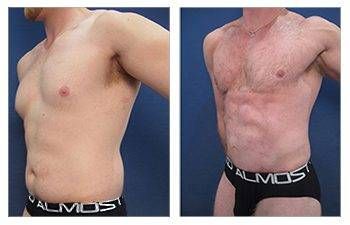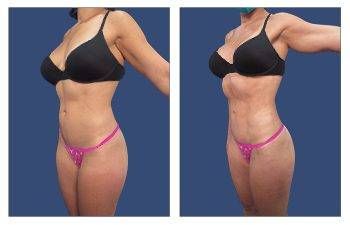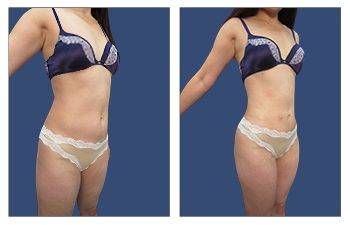Introduction: How to get rid of an Apron Belly
An apron belly, also known as a pannus or a mother’s apron, is the excess fat and skin that hangs down over the lower abdomen. This can be caused by factors such as pregnancy, weight gain, and aging. While it is often seen as a cosmetic concern, reducing the appearance of an apron belly is also important for overall health.Lifestyle choices such as regular exercise and a balanced diet can help to get rid of an apron belly. Incorporating cardiovascular exercises, strength training, and targeted abdominal exercises can help to tone the muscles and reduce excess fat. Additionally, medical treatments such as liposuction or a tummy tuck can be considered to remove excess fat and skin.
Reducing the appearance of an apron belly is not only beneficial for self-confidence, but it also plays a role in reducing the risk of health issues such as back pain, poor posture, and skin irritation. It is important to address an apron belly through both lifestyle choices and medical treatments to improve overall health and well-being.
What is an apron belly?
An apron belly, also known as a panniculus, is an overhanging layer of excess abdominal skin and fat that extends beyond the waistline. It can develop due to factors such as significant weight gain, rapid weight loss, or multiple pregnancies. The accumulation of visceral fat in the abdomen plays a key role in its formation, leading to an increase in the size and weight of the apron belly.
Physically, an apron belly can cause discomfort, limited mobility, and skin problems such as infections and ulcers due to the excess skin folds. It can also lead to back pain and difficulty in performing daily activities. Health implications include an increased risk of developing chronic conditions such as diabetes, heart disease, and hypertension.
The risks and complications associated with an apron belly include a higher likelihood of experiencing hernias and other abdominal wall issues. Treatment options may include lifestyle modifications, such as diet and exercise, or surgical intervention, depending on the severity and impact on daily life. Symptoms and problems commonly associated with an apron belly also include self-esteem issues and psychological distress.
What causes an Apron Belly?
An apron belly is characterized by a layer of fat that hangs over the abdomen, similar to an apron. This condition is often associated with obesity, pregnancy, or significant weight loss. It can be caused by a variety of factors such as genetics, hormones, and lifestyle habits. Understanding the underlying causes of apron belly is essential in finding effective strategies for prevention and treatment.
C Section Pooch
The C Section Pooch, often referred to as the bulge or pouch that appears around the lower abdomen after a cesarean section, can be targeted through specific exercises and workout routines. Start by incorporating pelvic tilts, kegels, and abdominal bracing into your daily exercise routine. Pelvic tilts help to engage and strengthen the lower abdominal muscles, while kegels strengthen the pelvic floor. Additionally, abdominal bracing helps to stabilize the core and improve posture.
Incorporating cardiovascular and strength training into your workout routine can also help reduce overall body fat, which can contribute to the C Section Pooch. Aim for at least 150 minutes of moderate-intensity cardio each week, such as brisk walking, swimming, or cycling. Strength training exercises, such as squats, lunges, and planks, can also help to build muscle and increase metabolism, leading to overall fat loss.
For a more targeted approach, consider consulting with a physical therapist or personal trainer who can provide specialized exercises and techniques to specifically address the C Section Pooch. With targeted exercises and a balanced workout routine, you can effectively reduce and address the C Section Pooch.
Weight Gain
Excess calorie intake leads to weight gain when the body consumes more calories than it burns. This excess energy is stored as fat, and over time, it can lead to the development of an apron belly, also known as visceral fat. This type of fat settles in the abdominal area and can lead to a protruding belly.
Continued weight gain, particularly in the middle, can have negative effects on overall health. It increases the risk of developing chronic conditions such as type 2 diabetes, high blood pressure, and cardiovascular disease. It can also lead to insulin resistance and inflammation in the body.
The health risks associated with excess weight gain in the abdominal area are significant. Research shows that visceral fat is more metabolically active than subcutaneous fat, releasing inflammatory substances and hormones that can contribute to a variety of health problems. These include an increased risk of heart disease, stroke, certain cancers, and even mental health issues.
Therefore, it’s important to be mindful of calorie intake and make healthy choices to avoid excess weight gain, particularly in the abdominal area. Regular exercise and a balanced diet can help to manage weight and reduce the risk of developing health complications associated with abdominal fat.
Weight Loss
Weight loss can have significant effects on the apron belly, which is the excess skin and fat that hangs down over the stomach. As the body sheds pounds, the apron belly may become more noticeable due to the loss of fat that once filled it out. This can result in excess skin hanging from the stomach, creating a droopy and sagging appearance.
While dieting and exercising are important for overall health and weight loss, they alone may not correct the issue of the apron belly. In some cases, surgical removal of the excess skin and fat may be the only option to achieve a more toned and tightened abdominal area.
However, the benefits of weight loss through healthy eating and varied exercise are still significant. Not only can it improve overall health and reduce the risk of chronic diseases, but it can also lead to increased confidence and an improved body image. It is important to note that even strong abdominal muscles alone will not completely eliminate the apron belly, so a combination of weight loss and potential surgical intervention may be necessary for some individuals to achieve their desired results.
How can you ease discomfort caused by an apron belly?
Dealing with the discomfort of an apron belly can be challenging, but there are several at-home remedies that can help. Utilizing anti-chafing creams can help reduce irritation and discomfort caused by the skin rubbing together. Support bands or special clothing designed to support the abdomen can also provide relief and help improve posture. Additionally, maintaining good hygiene in the area can help prevent skin irritation and infections.
It’s important to acknowledge the emotional toll that an apron belly may take on an individual. It can be difficult to feel confident and comfortable with this condition. Building confidence and finding ways to feel comfortable in your own skin is crucial. Seeking emotional support from loved ones or a professional can also be beneficial.
In conclusion, if you are dealing with discomfort caused by an apron belly, consider using anti-chafing creams, support bands, and maintaining good hygiene. Additionally, addressing the emotional aspect and finding ways to build confidence and feel comfortable in your own body is just as important.
Can you reduce or remove an apron belly?
An apron belly, also known as a pannus, is a common issue that many people face, particularly after significant weight loss or pregnancy. It refers to the excess skin and fat that hangs over the lower abdomen. Thankfully, there are various methods to reduce or remove an apron belly, ranging from lifestyle changes to surgical procedures. By implementing a combination of healthy eating, regular exercise, and targeted abdominal workouts, individuals can reduce the appearance of an apron belly.
In more severe cases, surgical options such as a tummy tuck or abdominoplasty may be considered to remove excess skin and fat. It’s important to consult with a healthcare professional to determine the best course of action based on individual circumstances and goals. With commitment and the right guidance, achieving a flatter, more toned abdomen is within reach for many.
Losing Weight by Exercising
Losing weight and reducing an apron belly requires a varied exercise plan that focuses on different types of movement to target all muscle groups and promote overall health. Instead of just relying on stomach crunches or sit-ups, incorporating a range of exercises such as cardio, strength training, and flexibility exercises can be more effective in achieving weight loss and toning the abdominal area.
Cardio exercises like running, swimming, or cycling help burn calories and promote fat loss, while strength training exercises such as squats, lunges, and push-ups work all muscle groups to improve overall body composition. Additionally, including flexibility exercises like yoga or Pilates can help increase muscle flexibility and reduce the appearance of an apron belly.
It’s important to pair regular exercise with a healthy, low-calorie diet to support weight loss and improve overall well-being. Incorporating plenty of fruits, vegetables, lean proteins, and whole grains while reducing processed foods and sugary snacks can help create a calorie deficit for weight loss.
By following a varied exercise plan that works for all muscle groups and pairing it with a healthy diet, individuals can achieve their weight loss goals and reduce an apron belly while promoting overall health and well-being.
Lose Weight by Eating Healthy
A balanced and nutritious diet includes whole foods such as fruits, vegetables, lean proteins like chicken, fish, and tofu, and whole grains like brown rice and quinoa. These foods provide essential nutrients, vitamins, and minerals that support overall health and well-being. It’s important to incorporate a variety of colorful vegetables and fruits to ensure a diverse intake of nutrients.
Avoiding processed foods, sugary beverages, and high-calorie snacks is crucial for weight loss and overall health. These items often contain high levels of unhealthy fats, sugars, and empty calories, which can lead to weight gain and poor health outcomes. Instead, focus on whole, natural foods that provide sustained energy and keep you feeling satisfied.
Adopting a healthy eating plan can support weight loss and also improve the appearance of an apron belly. By incorporating whole foods, lean proteins, and vegetables, you can reduce overall body fat and improve muscle tone, which can help to reduce the appearance of excess skin in the abdominal area. Additionally, a balanced diet can help to reduce inflammation and bloating, leading to a flatter, more toned stomach.
In conclusion, a balanced diet consisting of whole foods, lean proteins, vegetables, and whole grains is essential for weight loss and improving the appearance of an apron belly. Making healthy food choices can have a significant impact on overall health and well-being.
Increasing your water intake
Increasing your water intake can help reduce or eliminate apron belly. Start by committing to drinking at least 2 cups of water in the morning before anything else. This will kickstart your hydration for the day. Before each meal, aim to drink another glass of water, which will not only help with your water intake but also assist with portion control during meals.
For women, the goal should be to drink a total of 12 cups of water per day, while men should aim for 16 cups. To stay on track, carry a water bottle with you throughout the day, making it easier to remember to drink water regularly. Additionally, if plain water becomes boring, consider flavoring it with a small amount of 100% fruit juice, or lemon, or adding chunks of fruit for a refreshing twist. By increasing your water intake, you can help reduce bloating, improve digestion, and potentially see a reduction in apron belly over time.
Surgical and nonsurgical treatments
Surgical treatments for excess skin and fat in the abdominal area include abdominoplasty (tummy tuck) and liposuction. Abdominoplasty involves removing excess skin and tightening the abdominal muscles, while liposuction focuses on fat removal. These surgical options can provide long-lasting results, but they also come with potential risks such as infection, scarring, and a longer recovery period.
Non-surgical treatments, on the other hand, offer less invasive options for addressing excess skin and fat. EmSculpt NEO and Exilis Ultra 360 are non-surgical procedures that use radiofrequency and ultrasound technology to tighten skin, eliminate fat, and build muscle in the abdominal area. These treatments typically have minimal downtime and can be effective for patients who are looking for non-invasive options.
Suitable candidates for non-surgical treatments may include individuals with mild to moderate excess skin and fat in the abdominal area who are looking for a less invasive option with little to no downtime. However, it’s important to note that non-surgical treatments may not provide the same level of results as surgical procedures and may require multiple sessions for optimal outcomes.
Panniculectomy
A panniculectomy is a surgical procedure that removes excess skin and fat from the lower abdomen, often as a result of massive weight loss or after pregnancy.
Before the surgery, patients will need to have a thorough medical evaluation and follow specific guidelines for preparation, including not smoking and avoiding certain medications. During the procedure, the surgeon will make an incision in the lower abdomen, remove the excess skin and fat, and then close the incision with sutures. The surgery typically takes several hours to complete.
After the panniculectomy, patients can expect to have some discomfort, swelling, and bruising, which can be managed with pain medication and rest. They will also need to follow post-operative care instructions, including avoiding strenuous activity, keeping the incision site clean and dry, and attending follow-up appointments with the surgeon.
In conclusion, a panniculectomy involves thorough preparation, a precise surgical process, and careful post-operative care to achieve a successful outcome.
Does Insurance Cover a Panniculectomy?
To qualify for insurance coverage of a panniculectomy, the following criteria and requirements must typically be met: the patient must have documented evidence of medical necessity, such as chronic skin irritations or infections caused by excess skin, inability to perform daily activities due to the overhanging pannus, and a history of unsuccessful non-surgical treatments. Pre-authorization from the insurance company is also necessary, and documentation from the physician must include detailed medical records, photographs, and a comprehensive treatment plan.
Specific medical conditions and circumstances that may qualify for insurance coverage include massive weight loss after bariatric surgery, significant abdominal skin overhang that causes physical symptoms, and a body mass index (BMI) that falls within the insurance company’s guidelines. Potential out-of-pocket costs for the procedure may include deductibles, co-payments, and any costs related to the pre-authorization process.
In summary, insurance coverage for a panniculectomy is contingent on meeting specific criteria, obtaining pre-authorization, and providing documentation of medical necessity. Patients with medical conditions related to excess skin overhang may qualify for coverage, but should be aware of potential out-of-pocket costs.
Tummy Tuck
A tummy tuck, also known as abdominoplasty, is a surgical procedure that addresses excess fat and sagging skin in the abdominal area. The surgeon makes an incision, removes excess fat, tightens the skin, and may also repair abdominal muscles that have been weakened or separated, often due to pregnancy or other injuries. This procedure is often sought by individuals who have lost a significant amount of weight and are left with loose, hanging skin.
A tummy tuck differs from a panniculectomy in that it addresses a larger area of the abdomen, including excess fat and skin as well as muscle repair, whereas a panniculectomy focuses primarily on removing the excess hanging skin (pannus) from the lower abdomen without tightening the muscles.
Factors that determine whether a patient should undergo a tummy tuck or panniculectomy include the location of excess skin, the condition of the abdominal muscles, and the specific goals of the surgery. If the patient has excessive hanging skin with no abdominal wall issues, a panniculectomy may be the appropriate choice. Conversely, if the patient has both excess skin and muscle laxity, a tummy tuck may be recommended.
Does Insurance Cover a Tummy Tuck?
Insurance coverage for a tummy tuck varies depending on the specific insurance provider and policy. In general, insurance companies will consider coverage for a tummy tuck if it is deemed medically necessary. The criteria for medical necessity usually include documentation of related health issues such as back pain, rashes, or infections caused by excess abdominal tissue.
To request insurance coverage for a tummy tuck, patients typically need to undergo an evaluation by a healthcare provider who will determine if the procedure is medically necessary. The healthcare provider may then submit a request for pre-authorization to the insurance company, providing documentation of the medical necessity for the tummy tuck.
It is important for patients to carefully review their insurance policy to understand the specific requirements for coverage, such as documentation of medical necessity and proof of related health issues. Additionally, it’s important to have open communication with both the healthcare provider and the insurance company to ensure that all necessary steps are taken to potentially secure coverage for a tummy tuck.
Conclusion: How to Get Rid of Apron Belly
Apron belly, also known as a pannus or mother’s apron, can be reduced or eliminated through various lifestyle choices and medical treatments. For many, weight loss through a combination of diet and exercise is the most effective way to reduce apron belly.
Adopting a healthy diet that is low in processed foods and high in fruits, vegetables, and lean proteins can help in shedding excess fat. Regular exercise, such as cardio and strength training, can also help in reducing overall body fat, including in the abdominal area.
In cases where lifestyle changes are not enough, surgical options like a tummy tuck or abdominoplasty may be considered to remove excess skin and fat. It is important to note that reducing the appearance of an apron belly apron belly is not just a cosmetic concern, as it can be associated with health risks such as diabetes, heart disease, and musculoskeletal issues. Additionally, it can impact one’s self-image and confidence, leading to emotional distress. Seeking medical advice and exploring the various treatment options available can help in addressing both the physical and emotional aspects of apron belly.
